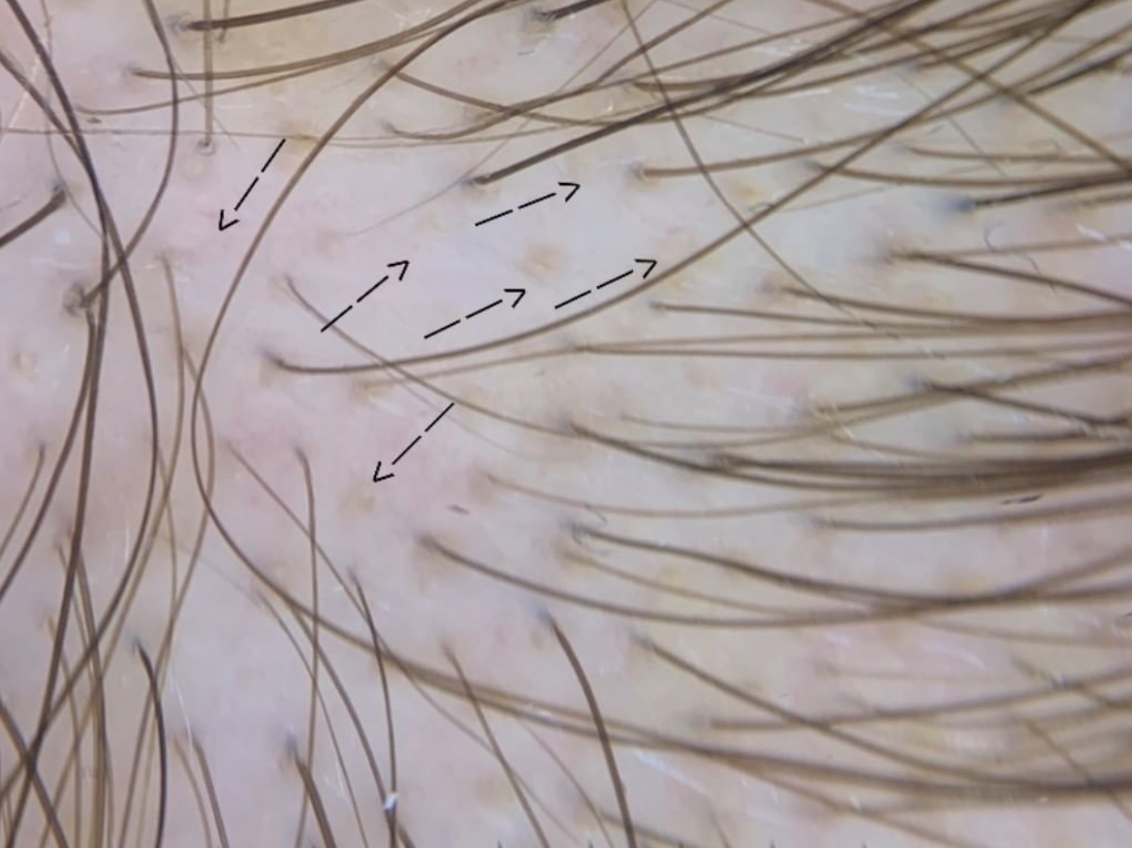Trichoscopy of Telogen Effluvium (TE) - A Closer look at Kenogen Phase and Yellow Dots
Trichoscopy of Telogen Effluvium - Kenogen Phase & Yellow Dots
For a period of time after a hair is shed from the scalp, it appears that the hair follicle opening sits empty. Of course, it is not truly empty because deep underneath the scalp follicular machinery is preparing yet again to manufacture a brand new hair. The period of time between a shed hair and the emergence of a new hair is called “kenogen”. Kenogen phase is typically quite short (1-2 months). The duration that a follicle remains in kenogen increases in patients with some types of hair loss. For example, in some cases of androgenetic alopecia, hairs have been found to remain in kenogen for up to 1 year.
The “sudden” appearance of hair follicle openings that are empty and lack follicles must also prompt one to consider a diagnosis of telogen effluvium.
Yellow dots in telogen effluvium signify hairs in kenogen phase. This finding is a non specific finding of telogen effluvium.
Sometimes we see upright regrowing hairs by dermoscopy as a sign of telogen effluvium but sometimes the dermatoscopic findings are extremely non specific and the only finding by trichoscopy is empty pores. It’s possible to have large numbers of hairs in kenogen in advanced stages of androgenetic alopecia but this is uncommon in the early stages. The finding of many empty pores is atypical of the early stages of androgenetic alopecia. The patient in this trichoscopic image androgenetic alopecia as one of the diagnoses. Variation in the caliber of hairs is easy to spot. However the large number of empty follicles is unexpected prompting one to consider that hairs have recently shed - as in a telogen effluvium. Causes include stress, low ferritin levels, thyroid dysfunction, crash diets, medications and internal illness. In this patient, a 49 pound weight loss over 2 months together with low ferritin levels and extremely intense and sudden stressful life events caused the patient’s androgenetic alopecia to suddenly “appear worse.
This article was written by Dr. Jeff Donovan, a Canadian and US board certified dermatologist specializing exclusively in hair loss.

